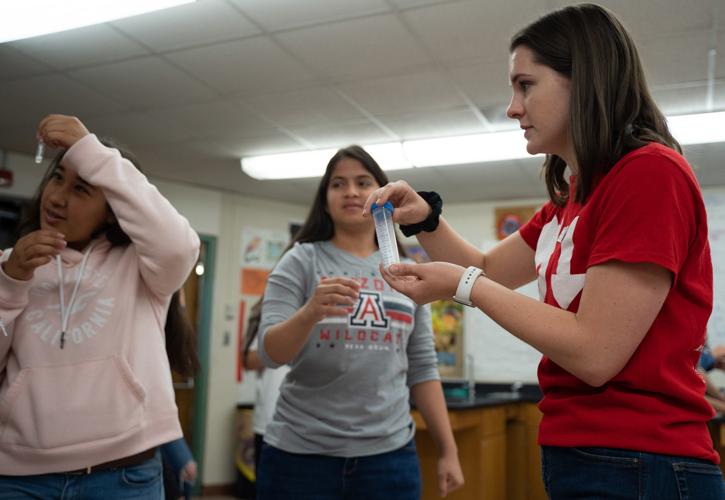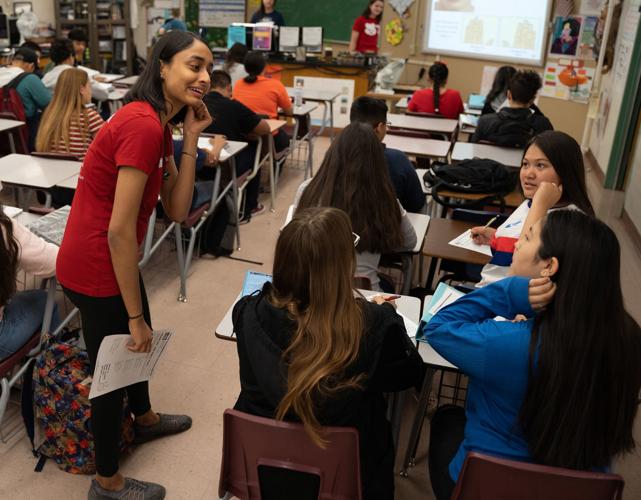A group of Cholla High School freshmen got pretty personal Wednesday as part of a biology lesson on DNA and prospective science-related careers.
The lesson т put on by University of УлшжжБВЅ students to commemorate DNA Day, which is celebrated on April 25 т pushed the teens to analyze their physical characteristics and their own saliva.
тCome on you guys, donтt be shy!т said Megan Molina, a graduate student studying molecular medicine at the UA, attempting to encourage the group of 20 students.
Molina and her UA colleagues are teaching students at Cholla, Rincon and Catalina high schools about the many ways genetic scientists are using DNA to advance medical science.
The point of the 45-minute-or-so presentation/demonstration is to not only inform high schoolers of the many real-world ways studying DNA could improve human life, but also to get them excited about prospective careers in science through hands-on learning.
People are also reading…
The UA students also wanted to use DNA Day to spread awareness of the National Institutes of Healthтs тAll of Usт Research Program, in which the UA participates. The project, at the local level, seeks to collect DNA and health data from 100,000 УлшжжБВЅans to be used in NIH research about gene-driven, individualized medicine and therapy.
Most freshman biology students already know the basic of DNA, said Michael Johnson, an assistant professor of immunobiology at the UA College of Medicine. But they donтt understand how their DNA is used for research purposes in the real world.
тDid you know you could actually use your DNA to figure out how this receptor might look, that (it) can block a treatment or make a treatment work?т Johnson told the Star. He helped Molina and another UA graduate student, Tyler Ripperger, coordinate the DNA Day festivities.
On Wednesday, the UA students walked the Cholla ninth-graders through hands-on experiments that drew on their existing knowledge of DNA and genetics.
The students learned how to use a тgenetic wheel,т identifying the types of genes they might have based on certain physical traits, like having a widowтs peak, detached earlobes or knuckle hair.
тYeah, yours seem detached!т one student said with a smile when her classmate asked about the state of her earlobes.
The teens also got a chance to extract their own DNA from their saliva using only dish soap, salt and isopropyl alcohol.
Students spat into a test tube т roughly one-thousandth of an inch worth of spit, or what scientists call a тmilт т before adding the dish soap, salt and alcohol at various stages.
тYour skin cells are going to slough off,т Molina told the students, who responded with a collective тew.т
Teaching kids about scientific concepts like personalized medicine through hands-on experiments is important because it gets them excited about learning, according to DNA Day volunteer Maddie Newman, who studies physiology at the UA.
Actually тextractingт DNA through your own problem solving sticks with students in a way reading about it canтt, Newman said. Itтs experiments like this that inspire students to pursue careers in science down the road.
тThose early inspirations have been what drove me into science and medicine,т Newman said.















